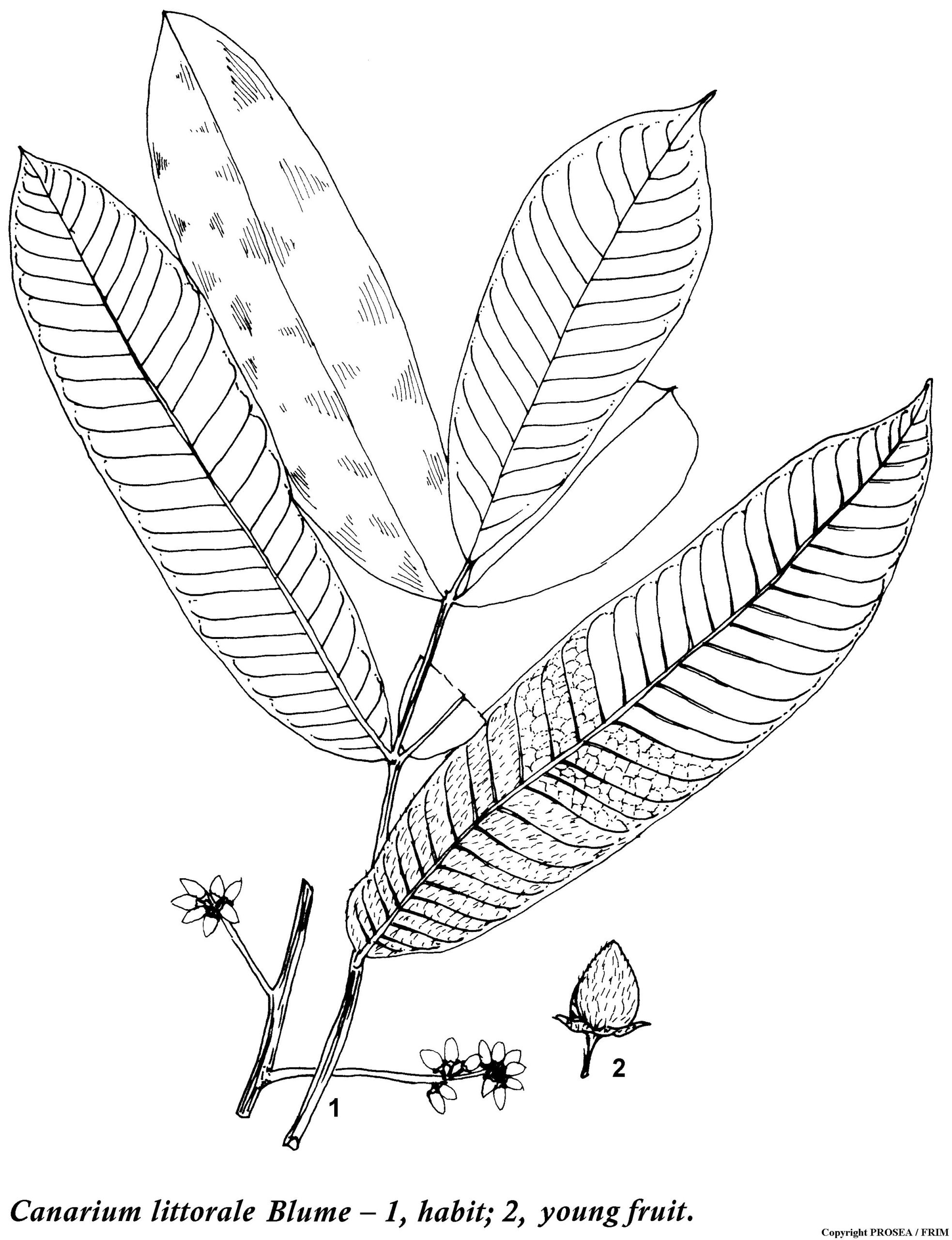Canarium littorale Blume
Family
Burseraceae
Synonyms
C. tomentosum Blume, C. purpurascens Benn., C. rufum Benn.
Vernacular Names
| Malaysia |
Kedondong bulan, kedondong gergaji, kedondong puteh (Peninsular). |
| Indonesia |
Mardundung (Palembang, Sumatra), ki kanari (Sundanese, Java), deluwak (Javanese, Java). |
| Brunei |
Damar kahingai, jelemu nanking, kawangan. |
Geographical Distributions
Indo-China, Peninsular Malaysia, Sumatra, Java and Borneo.
Description
Canarium littorale is a medium-sized to large tree that can reach measuring up to 45 m tall, branchless bole for up to 21 m, up to 100 cm in diametre and sometimes with short buttresses. The bark surface is smooth to dippled and scaly, grey-green to yellowish-brown in colour while the orange-red to brownish inner bark is laminated. The stipules are caducous or semi-persistent and kidney-shaped with wavy to deeply lobed margins.
The leaves are with (1-)5-13 leaflets and with hairless or hairy rachis. The leaflets are short acuminate at te apex, entire to serrulate or dentate margin, hairless to densely hairy below and on the above midrib, with 9-22 pairs of secondary veins which are more or less sunken above.
The inflorescence is terminal, sometimes with additional axillary. The male one is paniculate while the female one is subracemose. The flowers are measure 8-13 mm long and with 6 stamens.
The fruit is an ellipsoid to obovoid in shape, circular to triangular in cross-section, measuring 45-70 mm x 15—30 mm and it is smooth to sparsely hairy.
Ecology / Cultivation
C. littorale is common in well-drained to swampy locations in humid climates to climates with slightly seasonal conditions, usually in lowland forest but sometimes in montane forest, up to 1100(-2000) m altitude.
Line Drawing / Photograph

References
- Plant Resources of South-East Asia No. 5 (2): Timber trees: Minor commercial timbers.


